|
|
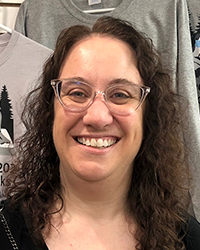 Jen Jen
|
 |

|
|
One Two Three
Laurie Frankel
The best book I’ve consumed this year has been One Two Three.
I listened to it on libro.fm which is an excellent way to experience it.
One Two Three refers to the nicknames of triplets Mab, Monday, and Maribel (Mab is One, Monday is Two, Maribel is Three—notice how each one has the same number of syllables as her birth order ;)) They are 16-year-olds living in the town of Bourne with their single mom, who works as the town’s counselor during the day and tends bar in the evening. Their dad died of cancer, due to chemical poisoning by the company that had once promised to bring prosperity to Bourne. Since then, the triplets’ mother has worked tirelessly to bring a lawsuit against the company. This is no small feat since she’s working two jobs and raising three children. Two of those children have some issues: Monday is on the autism spectrum and Mirabel is wheelchair-bound with use of only one hand. The characters are well-drawn, distinct, and believable. The book is well-written, and exquisitely crafted. I highly recommend it!! It was pure delight getting the chance to meet the author Laurie Frankel at Wine & Words in Nisswa, where we sold books for the Brainerd Library’s annual fundraiser.
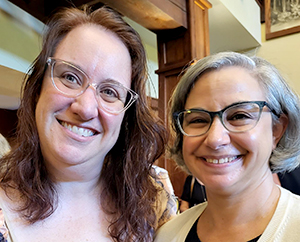
Jen and author Laurie Frankel at a recent book event

|
| |
|
 |
|
Over the past couple years, I’ve taken to reading/following/paying attention to British writer (now Texas resident) Edward Carey. During the pandemic lockdown, Carey did one drawing per day and posted it on Twitter. For a taste of these, see this website. You’ll see he includes illustrations of both a personal nature (ie: the cat that came to live with the family) and national news (George Floyd.)
Little
Edward Carey
In addition to being an illustrator, Carey is a terrific storyteller, which I learned reading his book Little, an historical novel based on the life of Madame Tussaud (with illustrations!)
|
| |
|
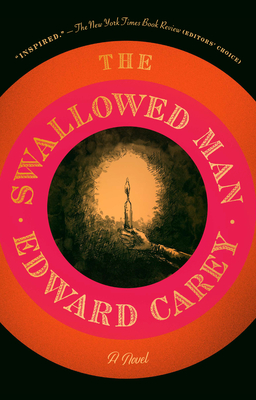 |
|
Swallowed Man
Edward Carey
Recently I read Carey’s The Swallowed Man. In this tale, Geppetto, the father/creator of Pinnochio has an argument with Pinnochio and Pinnochio runs away. Hearing a rumor that Pinnochio has taken to the sea, Geppetto desperately follows, but instead of chasing his son on a boat is swallowed by a giant fish. Following that, Geppetto is trapped in the belly of the fish with his thoughts and regrets. The story is quirky and heartfelt. This is not the Disney-version of Pinnochio nor the Bible’s tale of spitting Jonah up after he’s been sufficiently punished. I experienced this book by alternating between the print book (the illustrations!) and the audio book which is narrated by Carey (that voice!)
 
|
| |
|
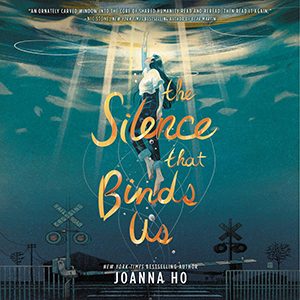 |
|
The Silence That Binds Us
Joanna Ho.
Another fantastic audio book I recently listened to was The Silence That Binds Us.
This young adult novel explores themes of racism, suicide, and family. Maybelline Chen has a close friendship with her older brother Danny. In addition, this brother-sister team has formed best-friendships with another brother-sister. When Danny dies by suicide (the seventh student suicide over the course of just a few years), some parents blame it on the Asian parents in the community, including Maybelline’s parents. Parts of this book are heart-wrenching to experience and yet all too believable. The Sister Wolf Book Group has selected this one as one of their summer reads and I’m looking forward to the discussion! I’m also hoping my 20-year-old daughter Megan will read it as well so we can talk about it!

|
|
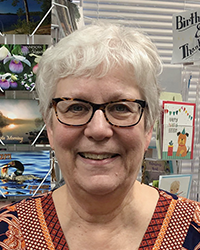 Sally Sally |
|
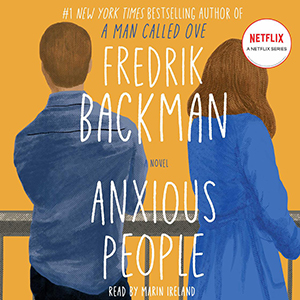
|
 |
Anxious People
Fredrik Bachman
Before last month, I may have been the last person in the world not to have read a book by Fredrik Bachman. After being charmed by him in a zoom session sponsored by Simon and Schuster, I corrected that deficiency by listening to Anxious People on Libro.fm.
The story centers around an attempted bank robbery by an inept robber (the bank was cashless) who ran out of the bank and inadvertently took hostage the people at an open house in an apartment building across the street from the bank. Initially I was confused because the book was so funny—how could it be with such a serious topic? Perhaps it was just the sardonic tone of the reader? I stopped listening to the book to read a few reviews and learned that it is indeed a humorous book. It is also poignant, telling the back stories of each of the
characters—would-be bank robber, hostages, police officers, with great humanity and generosity of spirit.
Now I understand why readers rave about Bachman and his books! Which would you recommend that I read next?

|
| |
|
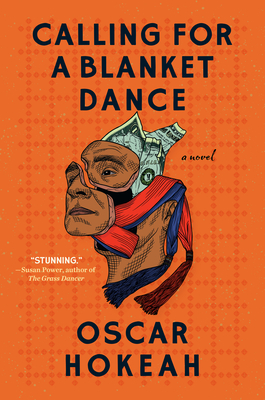
|
|
Calling for a Blanket Dance
Oscar Hokeah
I lived in Oklahoma for 15 years, and I think I was in every community mentioned in Calling for a Blanket Dance, Oscar Hokeah’s powerful debut novel. And yet, the world of the book was completely different from the world in which I, a non-native person, lived. Reading the book led me into communities and ways of being which were completely new to me.
The book is made up of linked stories which together tell the story of Ever Geimausaddle. On his mother’s side he is Cherokee and Kiowa, and on his father’s side Mexican. Ever and the many people who make up both his family and his community experience discrimination, disappointment, poverty, and alcoholism. They also experience the strength of being part of an extended family and a community, the power of music and dance, and a rich cultural heritage.
Ever and other characters in the book experience tragedies, unrealized opportunities, and homelessness. Yet there is also hope, healing, and the strength of family in their lives. The quilts made by Ever’s grandmother, Lena, appear in several places in the book. In many ways, the book is like a quilt, with separate stories, like quilt blocks, creating a thing of great beauty which is greater than the sum of its parts.
Calling for a Blanket Dance will take you into the world of its characters, and you will return having been profoundly moved, and perhaps bring a piece of that world with you.
This book is shelved on our Indies Intro display, a collection of debut works judged by independent booksellers to be particularly excellent. |
| |
|
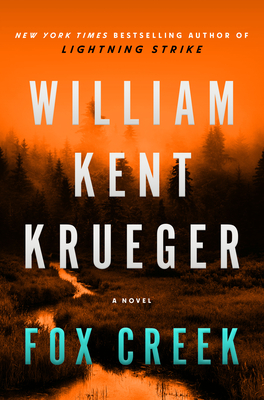 |
|
Fox Creek
William Kent Krueger
How does the author of a long-running series keep each new book fresh without merely telling the same story over and over? Obviously, some authors don’t, but William Kent Krueger manages it beautifully. His devoted fans wait eagerly for each new installment in the Cork O’Connor series.
And how does he do it? The setting is almost always the same, Tamarack County in northern Minnesota. While the core group of characters is the same in many of the books, they grow, develop, and change across the series. There’s a deep humanity in Krueger’s treatment of these characters, which makes them come alive to readers.
Cork O’Connor, part Irish, part Ojibwe, was, like his father before him, the sheriff of Aurora. Now he runs a diner and investigates crimes on the side, often working closely with his successor as sheriff. O’Connor is, at heart, a decent man with all too human flaws.
Fox Creek is the 19th book in the Cork O’Connor Series. This installment focuses on Henry Meloux, the aged Ojibwe healer. Both he and Cork’s son have had a vision of his death, and Meloux is not certain if this is imminent or in the future. However, he is a person at home with himself and his future, whatever it might be. His wish is to prepare peacefully for whatever comes.
However, the incidents which unfold are not peaceful. A stranger, a woman named Dolores Morriseau, comes to Meloux’s remote home, seeking advice. His great niece Rainy, who is married to Cork O’Connor, is also present. Very quickly, danger appears in the form of men hunting Dolores, for reasons which are only gradually revealed.
Henry leads both women into the Boundary Waters. With his deep knowledge of the area and of human nature, his hope is to keep them safe.
Meanwhile, Cork frantically works to discover who is pursing them and why. He begins to track both groups in the Boundary Waters, hampered by a late season snowstorm.
The book is masterfully plotted, and suspenseful to the end. The only problem with it? Waiting a whole year for number 20 in the series.
Note: the book will be released August 23. We are currently taking pre-orders.
|
| |
|
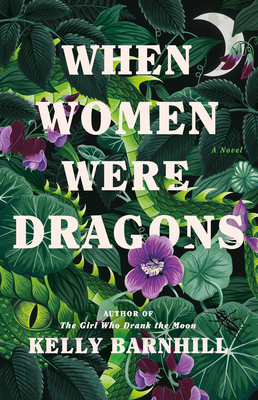 |
|
When Women were Dragons
Kelly Barnhill
I was reading this book when Roe V Wade was overturned and found it to be a powerful commentary on that decision.
The narrator of the book is Alex. She tells the story near the end of her long life, concentrating on events when she was growing up in the 1950s and 60s. I also grew up in that era, and think that Barnhill did an excellent job portraying a time when the ideal woman was a wife and mother content to be a homemaker, children were expected to accept their parents’ decrees without understanding them, and talking about homosexuality was taboo. In 1955, a mass dragooning occurred. Thousands of women, including Alex’s Aunt Marla, turned into dragons on the same day. Many of them torched the homes and the husbands they left behind. The government attempted to keep this a secret and silenced the work of scientists who attempted to study dragoning in a manner similar to the McCarthyism of the same period.
Alex’s mother raises Beatrice, the child Marla left behind when she dragooned. When the mother dies of cancer, care of Beatrice falls on Alex. Her father quickly remarries and sets the girls up in an apartment. Against his wishes, Alex focuses on her studies and prepares for college and a career in mathematics. Her mother was a brilliant mathematician whose dreams of a career in that field were stifled by her husband.
The story is complex and has much to say to our present moment. The metaphor of dragons is a powerful one. Read this book and discuss it with other women! |
| |
|
|
|
|
|
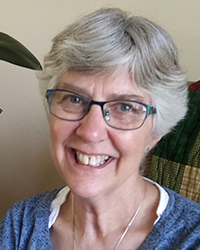
Ann
|
|
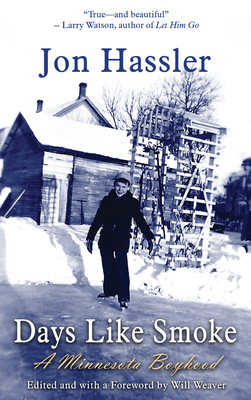
|
|
Days Like Smoke: A Minnesota Boyhood
Jon Hassler
Days of Smoke is a memoir of Jon Hassler's childhood years. Hassler spent most of his youth in the small towns of Staples and Plainview, Minnesota. The author shares personal accounts of his experiences in a descriptive, relatable way. Yet he is not overly sentimental. Six chapters comprise the book: Houses, Movies, Churches, Photos, Lessons, and Groceries. Within these chapters, readers meet the people, experiences, and places that were most influential on Hassler. I found myself speculating how Hassler's childhood experiences might have inspired the characters and events in his future writing. As I read Days of Smoke, I remembered a conference I attended early in my teaching career. Jon Hassler was one of the speakers. His message encouraged everyone to write their memoirs. In following his own advice, Hassler has left Days Like Smoke as a final gift to the many readers who have enjoyed his work.
Note: the copies of Days Like Smoke in the store are signed by editor Will Weaver.
|
| |
|
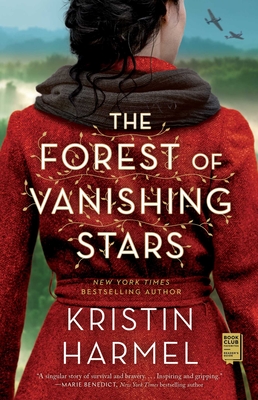 |
|
The Forest of Vanishing Stars
Kristin Harmel
As the story begins an older woman, Jerusza, kidnaps two-year-old girl Inge from her wealthy German parents. She calls the girl Yona. Jerusza teaches Yona about nature and how to live in the wilderness. After Jerusza's death, Yona continues to live in the wild until she comes upon a group of Jews who have escaped to the forest to seek refuge from the Nazis. Yona is shocked to learn about the hardships and violence experienced by Jews living in Poland. As she adjusts to interacting with other humans, she teaches the group how to live and survive in the forest. When events force Yona out of the woods and into a German-occupied village, she faces a situation that could change everything. The Forest of Vanishing Stars is an extensively researched story of World War II, portraying the human race's tragic cruelty and incredible strength and perseverance. |
| |
 |
 |
 |
|
|

Bob |
|
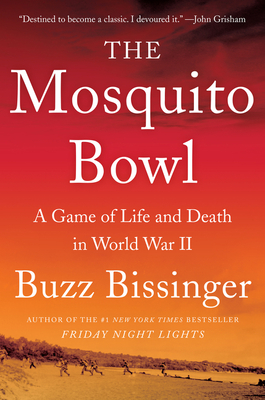
|
|
The Mosquito Bowl
Buzz Bissinger
I’m not one for historical non-fiction, but I have to admire the author for the legwork and research he did to come up with this book. If you’re looking for a sports tie-in, the actual game (yes it was played) consumes about 4 pages. However, the rest of the book goes into wonderful background concerning not only the players in the game but what life was like during WWII. The players were actually men from two Marine Regiments, the 6th and 29th, and the game was played on Christmas Eve 1944 on Guadalcanal, hence the unique (and totally accurate) bowl title. It seems that there were a number of really good college and pro football players in these two regiments and a lot of bragging rights were on the line. But the real heart of this book is the descriptions of the times in the 1930’s to 1940’s. Some are conditions at home that are so tough for immigrants. Some are stories of segregation and horrible atrocities. Then there are descriptions of war scenes and the utter waste of human life by incompetent leaders. The author tells it like it is, having sought out those veterans who somehow survived those times to tell their stories.
This is a well-written book that touches on all aspect of life in that era.
Note: this book will be released September 13 and may be pre-ordered now.
|
|
| |
|
 |
|
|
|

Cascade
|
 |
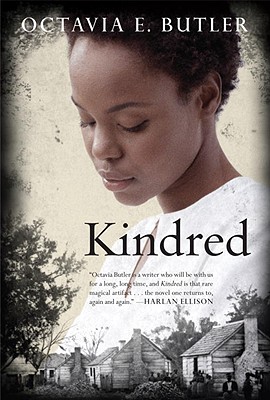 |
 |
Kindred
Octavia E. Butler
This book is the first science fiction novel written by a Black woman, which I did not know until finishing the book and doing research on it. Although labeled as science fiction, many readers who like historical fiction and magical realism will resonate with this book because the main sci-fi aspect is time travel.
Dana is an African American woman living in the 1970s who is suddenly whisked back to the 1800s, just in time to save the life of a white man. Shortly after this incident is resolved and as Dana is fearing for her own life in this time of blatant racism and slavery, she is sent back to the 1970s. Dana cannot control when she time travels and these episodes continue with Dana being stuck in the past for longer and longer. Many secrets are revealed as to why Dana must save this man from the past, but you will just have to read it to find them out!
|
| |
|
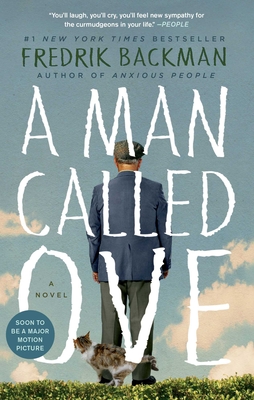 |
|
A Man Called Ove
Fredrik Backman
I have heard people rave about Fredrik Backman’s books for several years and decided it was high time to pick one up. This novel encapsulates the cantankerous old man spirit in the titular character of Ove. Ove is struggling to handle a changing world, with matters like the confusing nature of technology, people who will not follow the homeowners association rules, pesky stray cats, and his wife’s recent death. New neighbors who run over Ove’s mailbox while moving in seem to be just another nuisance, but this disorganized family will prove to be exactly what Ove needs to begin enjoying life again. This book is overall very light-hearted and made me chuckle on several occasions, but readers be warned it is sweet and sad enough at times to cause tears. |
| |
|
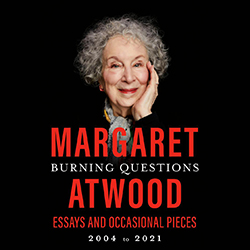 |
|
Burning Questions:
Essays and Occasional Pieces, 2004 to 2021
Margaret Atwood
I listened to this collection of essays on Libro.fm which was a wonderful experience with a chorus of different speakers that rotate reading each section and Atwood reading a couple of the pieces herself. This collection tackles serious issues such as climate change, debt, and the pandemic, but also includes very speculative and insightful pieces surrounding various topics and the many novels Atwood has written. I found the essays discussing the Oryx and Crake and Handmaids Tale series to be especially interesting and think other lovers of Atwood’s novels will as well.  |
| |
|
|
|
|
|
|
| |
|
 |
|
|
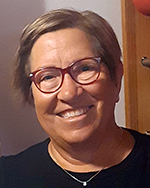
Doni
|
|
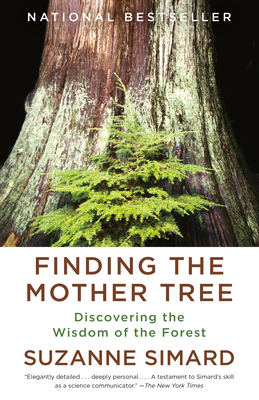 |
|
Finding the Mother Tree
Suzanne Simard
In the late 1970’s, a young forestry intern pulled up a fir sapling that had been planted in a clear-cut zone. The sapling was yellow and ailing, unlike its naturally sown kin. It had been planted in a slit that placed the roots deep in the granular mineral soil, and they were meager and non-sustaining. Its native cousin found its sustenance in the rich humus that covered the non-cleared forest floor.
Suzanne Simard grew up summering in the forest. Her family was old-time loggers who carefully selected which trees they would harvest and honored the woods in the process. Her experience as a summer forestry service fostered the questions that led to her life of research into how forests thrive.
One of her early hypotheses surmised that trees shared resources. Young birch provide nitrogen to tiny fir for example, belying theory of competition in the forest. Her research progressed from there, to discovering the role of the Mother Tree.
I did love this book. Simard’s passion for the woods and her pursuit of understanding the connections, interactions and communication make for a fascinating read. |
| |
|
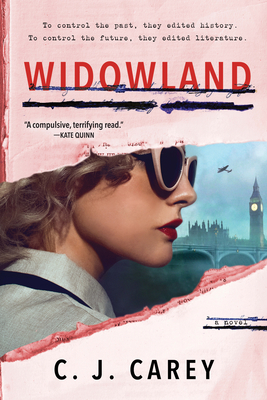 |
|
Widowland
C.J. Carey
In a dystopian past where Germany defeated England in the second world war, all women are categorized according to a scale that renders them to a caste according to their looks, the Nordic/Aryan look being particularly valued. The lowest caste is banished to Widowland, the slum area where childless women over 50 with no utility to men are relegated.
Rose is of the highest caste and works for the government correcting works of classic literature, editing them for subversive content. She is conscripted by the cultural minister for the Protectorate to find out who is responsible for the vandalism appearing, phrases like “Strengthen the female mind by enlarging it and there will be an end to blind obedience” emblazoned in red on walls throughout the city.
The book depicts a culture that seeks to control female lives, and the power and hopefulness of the oppressed.
Note: this book will be released August 9. It may be pre-ordered.
|
| |
|
|
|
|
|
| |
|
|
|
|
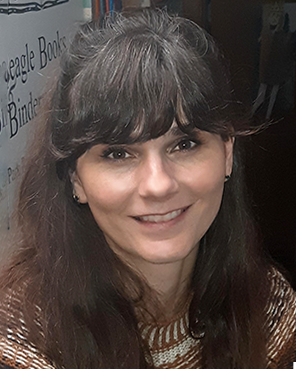
Gina |
 |


|
 |
The Swimmers
Julie Otsuka
This is a story of two parts.
Part One takes place in an underground community swimming pool. Here people with one commonality, swimming, converge. Some people are slow lane, some fast, aggressive lappers, and others oblivious backstrokers. One day a crack is found in the pool. This seemingly insignificant crack causes quite the stir.
In Part Two we take a closer look at one of our swimmers, Alice. Alice is slowly losing her memory and entering the beginning stages of dementia. Her daughter is tasked with helping her during this transition.
This is the best book I have read this year. Julie Otsuka takes us into the minds of the swimmers. She touches on the subjects of herd mentality, nursing homes, and loss. The first half of the book has a fun, campy, light feel. To me, it reads as an allegory on the pandemic and Americans.
The second half of the book is heavy, emotional, and beautiful. There were many times where I had to set the book down, walk away and work through the emotions that Otsuka was bringing up. Both of my grandmothers finished their lives in nursing homes, one because of dementia. This book is absolutely moving, incredibly smart and I loved every page.
|
|
| |
|
|
|
|
|

Hannah
|
|
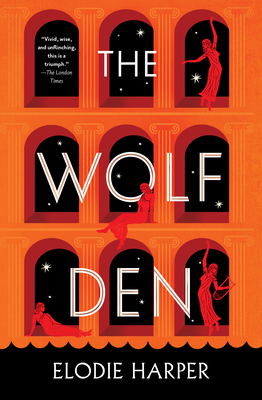
|
|
The Wolf Den
Elodie Harper
If you loved Circe, you should be taken with The Wolf Den. The protagonist Amara was born free and comfortable, but her doctor father died and her then impoverished mother was forced to sell Amara into slavery. She has ended up in a brothel in Pompeii, where she suffers and endures, and constantly plots to find a route to freedom. Her cruel master and her fellow whores and the other slaves in and near the brothel are not reduced to stereotypes. Each has a personality and a story, and a different relationship with Amara.
Elodie Harper is a journalist as well as an award-winning writer of short stories. She studied Latin at Oxford, and her research included “trapsing round Pompeii.” Each chapter starts with a quotation from Roman poetry or plays… or graffiti from the walls of Pompeii.
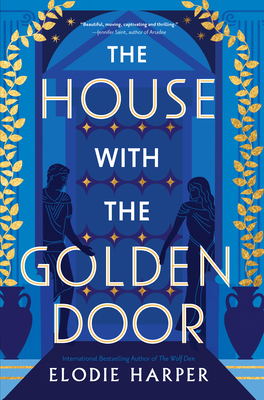 The Wolf Den is the first book in a trilogy. The second book, The House with the Golden Door, will be available in hardback September 6 and can be pre-ordered. I can’t wait! The Wolf Den is the first book in a trilogy. The second book, The House with the Golden Door, will be available in hardback September 6 and can be pre-ordered. I can’t wait!
|
| |
|
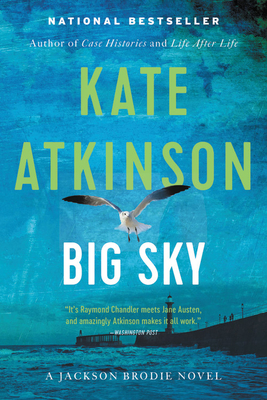
|
|
Big Sky by
Kate Atkinson
I want to rush out and get Atkinson’s previous Jackson Brodie novels! Well, it was fun not knowing that he’s the protagonist in the beginning. Each chapter early in the book is from the viewpoint of a different character, and Brodie was so busy worrying about the sulkiness of his teenage son that it barely registered that he was following a canoodling couple. There are so many, varied characters introduced that it’s very hard to imagine how they will be pulled together into one plot. And some of the loose threads in the end are amusingly resolved.
This is a very enjoyable book that I highly recommend, but one of the blurbs on the cover has me stumped. Washington Post says, “It’s Raymond Chandler meets Jane Austen.” This modern novel is about trafficking sex workers (not a spoiler as you see it in the first chapter) and gruesome murders. I can’t for the life of me see any relationship to Jane Austen. Maybe you will! Consider this a challenge. |
| |
|
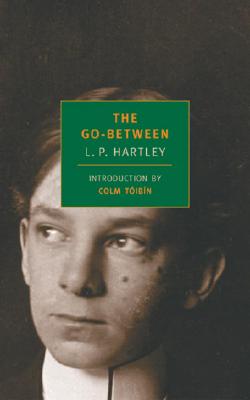
|
|
The Go-Between
L.P. Hartley
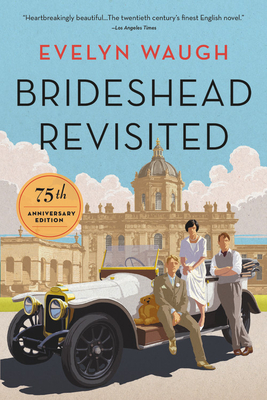 This book reminds me very much of Brideshead Revisited by Evelyn Waugh (which was made into a monumental miniseries.) In both books a wealthy aristocrat befriends a schoolmate and brings him home, into his family’s complex life. And in both books the befriended man looks back at his experiences with the family and sees how they have changed his life, with tragic outcomes. The tone of the two books is remarkably similar. This book reminds me very much of Brideshead Revisited by Evelyn Waugh (which was made into a monumental miniseries.) In both books a wealthy aristocrat befriends a schoolmate and brings him home, into his family’s complex life. And in both books the befriended man looks back at his experiences with the family and sees how they have changed his life, with tragic outcomes. The tone of the two books is remarkably similar.
In The Go-Between the schoolmate, Leo, is only 12 years old and sees himself as a “little boy.” He is bright and imaginative but quite naïve about what is happening with the grown-ups in the house. He gets involved in a matter that he is ill-equipped to handle. It’s all very British and it brings 1900 to life: the promise of a shiny new century that crumbled only a few years later.
|
|
| |
 |
 |
 |
|
|
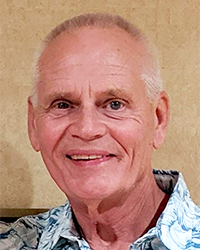
Lee |
|

|
|
Radium
John Enger
Radium is the story of two brothers on the run. Jim is 15 and was badly damaged in the auto accident that killed his father. He idolizes his older brother Billy and will do anything for him. The brothers live in a trailer house on the edge of a beet field near Radium, a dying town in the Red River Valley. Trouble arises, and the brothers are forced to flee.
Their escape takes them westward, hunted from the southern border to Alaska.
Although an adventure story with plenty of action, it is much
more than that: there are fascinating characters, a strong focus on sibling bonds, and an examination of families.
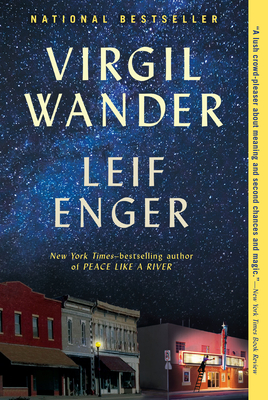 And because everyone will ask ... Yes, John Enger is related to the Enger brothers. And because everyone will ask ... Yes, John Enger is related to the Enger brothers. 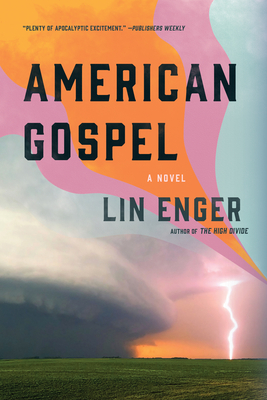 Father Leif’s mostrecent book is Virgil Wander, and Uncle Lin’s is American Gospel. Father Leif’s mostrecent book is Virgil Wander, and Uncle Lin’s is American Gospel.
Note: Lin Enger will join our men’s group via zoom when they discuss American Gospel on August 16.
|
| |
|
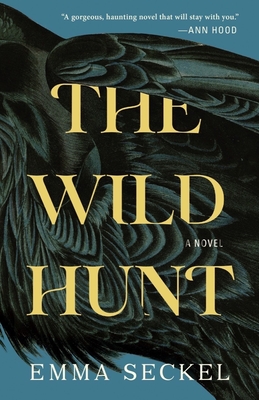
|
|
The Wild Hunt
Emma Seckel
Leigh Welles grew up on an island off the far northern coast of Scotland. (At one point the Shetland Islands are mentioned as being “near enough.”) Following WWII, she left the island for the mainland for a handful of years, where she did little more than survive. She was called home upon her father’s death, and she was again faced with the tragedies that shroud the island. These tragedies have a physical manifestation in the sluagh ... crows hosting the souls of the dead, according to Celtic legend. Each October these birds infest and attack the islanders, and both their numbers and the violence have been increasing.
Each of the characters carries their own torments: the death of a wife, children and husbands lost in the war, the liberation of Dachau, the disappearance of a mother, the abandonment of family... And there is so much blame that people throw upon themselves without just cause while, at the same time, not seeing the good and wonderful things that they do.
Note: This book will be released August 2.
|
|
| |
|
| |
|
|
|

Tim
|
|

|
|
Cathedral
Ben Hopkins
I'm obsessed with history, and its natural offshoot, historical fiction. Excellent examples of historical fiction are books by Ken Follett and Robert Graves. Ben Hopkins’ Cathedral is also a perfect fit with this genre of writing. Hopkins is a screenwriter and a filmmaker, and his writing has the cinematic quality of tightly focusing on the intimate and personal, and then zooming out, to the broad perspectives of economic, social and political influences. He tells the stories of people living in the mid-sized German trading town of Hagenburg, on the Rhine River from 1229–1351 AD. Christians and Jews, rich and poor, and we experience with them the events that changed their lives over the course of a little more than a century, in an area of Europe, less well explored in writing, than the larger cities in less fractious regions. I'm thinking of Paris, London, and Vienna. Remember, it was in one of these mid-sized smaller towns, Wittenburg on the Elbe River, that in 1517 the Reformation began.
|
| |
|

|
|
The Hummingbird
Sandro Veronesi
This was my first encounter with the Italian writer Sandro Veronesi, two-time winner of the Primio Strego writing award. I feel it's important that we, as readers, pay special attention to contemporary writers working in languages other than English... that is when we're lucky enough to encounter them in translation. Some psychologists assert that language provides a template or framework for the way we think. Different languages may then grant us differing perspectives. I've noticed an openness to magic and spiritual mysticism in Spanish speaking writers; not always but often. Does this seem so to you too? So, it's interesting to read someone working in Italian. Family, relationships, and personal loss, while not uniquely Italian themes certainly, seem to be handled with a mature polish of self-reflective candor. Oh, they're bumpy and messy. They always are, but is this an Italian cultural trait, or is it Varonesi's particular skill as a writer? Or perhaps something of both? I'll have to read more. Your thoughts? |
|
| |
|
|
Would you like to be a guest reviewer?
Email Sally at sally@beagleandwolf.com |
| |
|
|
|
|
|
— page top —
|
|

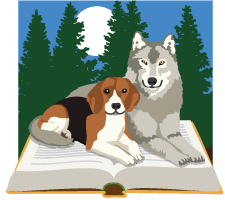





 Sally
Sally




 The Wolf Den is the first book in a trilogy. The second book, The House with the Golden Door, will be available in hardback September 6 and can be pre-ordered. I can’t wait!
The Wolf Den is the first book in a trilogy. The second book, The House with the Golden Door, will be available in hardback September 6 and can be pre-ordered. I can’t wait!





























